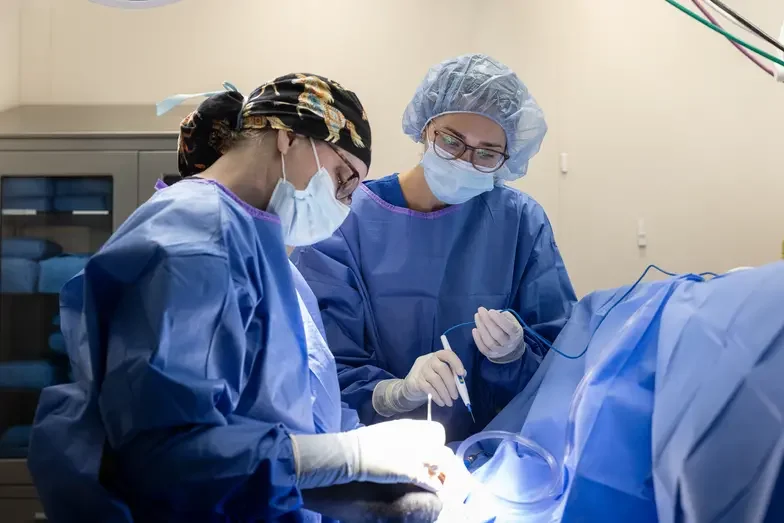Increasing Access to Care Through A Lifesaving Procedure: Autotransfusion

Recent research from the ASPCA finds that autotransfusion, where a patient’s own blood is collected and reinfused, is a safe and effective alternative to resource-intensive traditional transfusions.
With traditional transfusions, it is necessary to acquire and store blood products, and thaw and match blood products to recipients, leading to high financial and time costs. Autotransfusion uses a readily available blood source that is compatible with the patient and is therefore much more accessible and affordable and avoids risks associated with traditional transfusion. This lifesaving procedure could be applied to any context in which blood can be collected from the patient and safely readministered, including trauma and internal bleeding from a mass.
In the first known study exploring survival rates of autotransfusion, ASPCA found that of 56 cats who received an autotransfusion after experiencing internal bleeding following spay surgery, 47 (84%) survived to discharge. For patients who do not have underlying conditions that compromised their health, the survival rate for autotransfusion is at least as high as that reported in other studies of cats transfused with traditional blood products, suggesting that autotransfusion can be as effective as traditional transfusion.
Given the availability and lower cost of autologous blood products in certain emergency situations, more widespread practice of autotransfusion could substantially increase access to lifesaving treatment, particularly where blood is not readily available for transfusions or traditional transfusions are prohibitively expensive. If autotransfusion can be more widely adopted in veterinary medicine, it may decrease the barriers to accessing lifesaving interventions and decrease the cost of emergency care, thereby increasing access to care.
